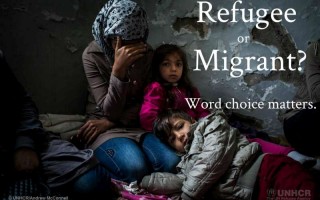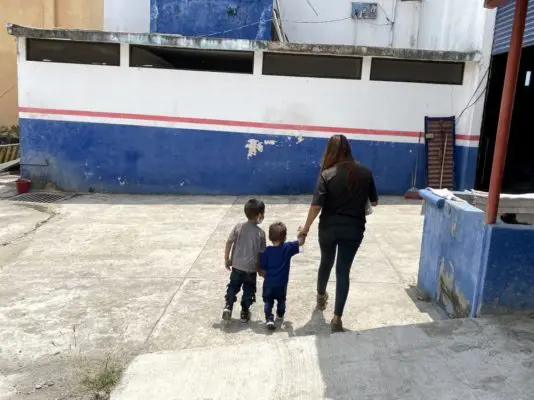NEW YORK/GENEVA/ROME – The crises gripping the Central Sahel are exacerbating humanitarian and protection needs and threatening to reverse development gains. In 2024, some 17 million people in Burkina Faso, Mali and Niger need humanitarian assistance and protection – or about one fifth of the population.¹ This crisis also disproportionately affects women and girls, worsening gender inequalities in the region.
The levels of violence are alarming in some areas: in October and November 2023 alone, nearly 700 civilians were reportedly killed – or 11 people every day and nearly double the rate reported in September.² At least 3 million people are currently displaced, mostly women and children. Basic services are also impacted, with around 8,400 schools and 470 health facilities no longer functioning. These trends are intensifying humanitarian needs and preventing people from fully enjoying their human rights.
In Niger, humanitarian partners have for the past six months struggled to bring supplies into the country due to border closures. Projections of humanitarian needs for the coming months are deeply concerning and could be exacerbated by poor harvests, insecurity, displacement, protection risks, the impact of sanctions, and the effects of suspensions in development aid.
In Burkina Faso, insecurity and other challenges have increasingly forced aid agencies to rely on expensive air transport to deliver assistance, reducing overall humanitarian reach. Humanitarian partners are working with the authorities to improve access, conscious of the need to respond as efficiently and effectively as possible to deliver critical assistance, including via overland transport.
In Mali, insecurity has continued in parts of the north, east and centre, in some cases generating new displacement and new needs, as well as creating challenges for humanitarian operations. Aid agencies aim to stay and deliver assistance and protection to the most vulnerable men, women and children. But additional resources are urgently needed for critical support services – including logistics, security, mine action and medical evacuation capacity, as well as community engagement.
Despite risks and limited resources, national and international humanitarian partners – working with local organizations – continue to deliver. So far in 2023, they have assisted roughly 6.3 million people³ across the Central Sahel, complementing efforts by national and local authorities and communities.
But aid operations are facing crippling funding shortfalls: in 2023, humanitarian appeals for the three Central Sahel countries received only about one third of funds required – or about $781 million. In 2024, around $2.2 billion is required to help 10.4 million people across the region.⁴
Aid agencies are also clear that while humanitarian aid is urgently needed, it is not the solution to the cycles of hunger, displacement and disease that characterize the crisis in the Central Sahel. Investments in resilience, sustainable development and social cohesion are critical to help communities keep moving forward and to prevent further increases in humanitarian needs. Inclusive and effective participation channels are also needed to enable diverse voices of affected people to contribute to programmes and decision making that affect their lives and rights.
These investments should be complemented by expanded partnerships with local communities and civil society, including women-led organizations. Steps that risk compounding civilian suffering – such as untargeted sanctions or suspensions of development aid – must also be avoided.
For years, the world has agreed that we must do more to help the people of Burkina Faso, Mali and Niger.
Now is the time to turn those words into action.
Signatories:
• Mr. Martin Griffiths, Emergency Relief Coordinator and Under-Secretary-General for Humanitarian Affairs (OCHA)
• Dr. Qu Dongyu, Director-General, Food and Agriculture Organization (FAO)
• Ms. Sofia Sprechmann Sineiro, Secretary General, CARE International
• Ms. Jane Backhurst, Chair, ICVA (Christian Aid)
• Mr. Jamie Munn, Executive Director, International Council of Voluntary Agencies (ICVA)
• Mr. Tom Hart, President and Chief Executive Officer, InterAction
• Ms. Amy E. Pope, Director General, International Organization for Migration (IOM)
• Ms. Tjada D’Oyen McKenna, Chief Executive Officer, Mercy Corps
• Mr. Volker Türk, United Nations High Commissioner for Human Rights (OHCHR)
• Ms. Janti Soeripto, President and Chief Executive Officer, Save the Children US
• Ms. Paula Gaviria Betancur, United Nations Special Rapporteur on the Human Rights of Internally Displaced Persons (SR on HR of IDPs)
• Mr. Achim Steiner, Administrator, United Nations Development Programme (UNDP)
• Dr. Natalia Kanem, Executive Director, United Nations Population Fund (UNFPA)
• Mr. Filippo Grandi, United Nations High Commissioner for Refugees (UNHCR)
• Ms. Maimunah Mohd Sharif, Executive Director, United Nations Human Settlement Programme (UN-Habitat)
• Ms. Catherine Russell, Executive Director, United Nations Children’s Fund (UNICEF)
• Ms. Sima Bahous, Under-Secretary-General and Executive Director, UN Women
• Ms. Cindy McCain, Executive Director, World Food Programme (WFP)
• Dr. Tedros Adhanom Ghebreyesus, Director-General, World Health Organization (WHO)
• Mr. Andrew Morley, President and Chief Executive Officer, World Vision International
¹ This estimate is based on initial 2024 projections released as part of the 2024 Global Humanitarian Overview. Final figures will be confirmed in the coming weeks through each country’s individual Humanitarian Response Plan.
² Casualty estimates come from the ACLED dataset.
³ This estimate includes delivery by UN agencies and NGOs working through Humanitarian Response Plans up to 30 September 2023. Full-year 2023 delivery figures will be available in Q2 2024.
⁴ This estimate is based on initial 2024 projections released as part of the 2024 Global Humanitarian Overview. Final figures will be confirmed in the coming weeks through each country’s individual Humanitarian Response Plan.





